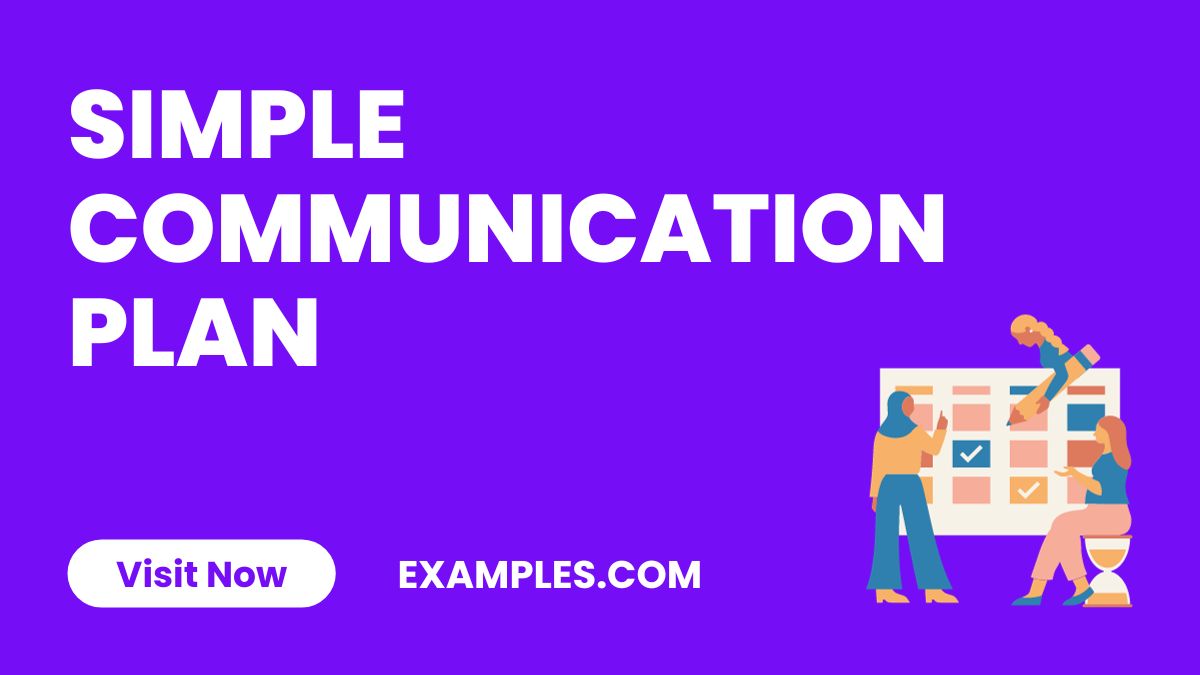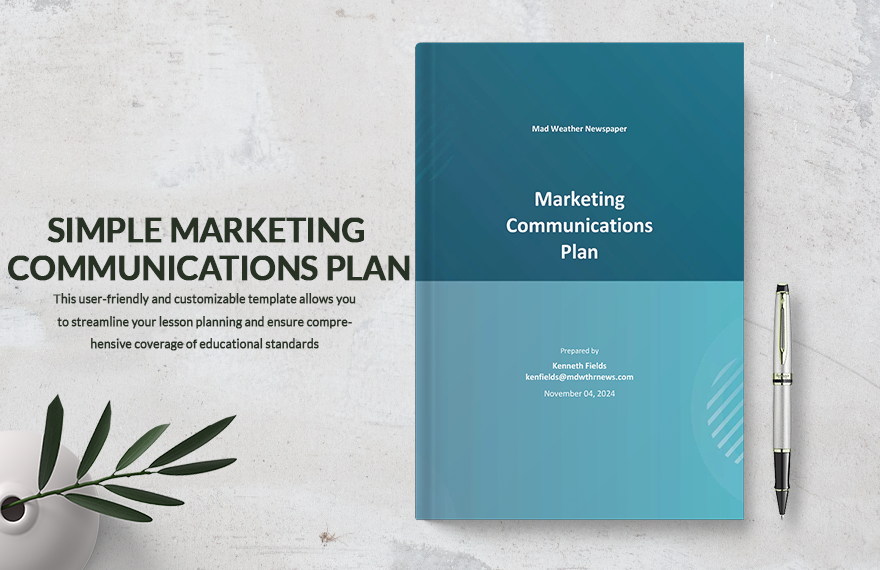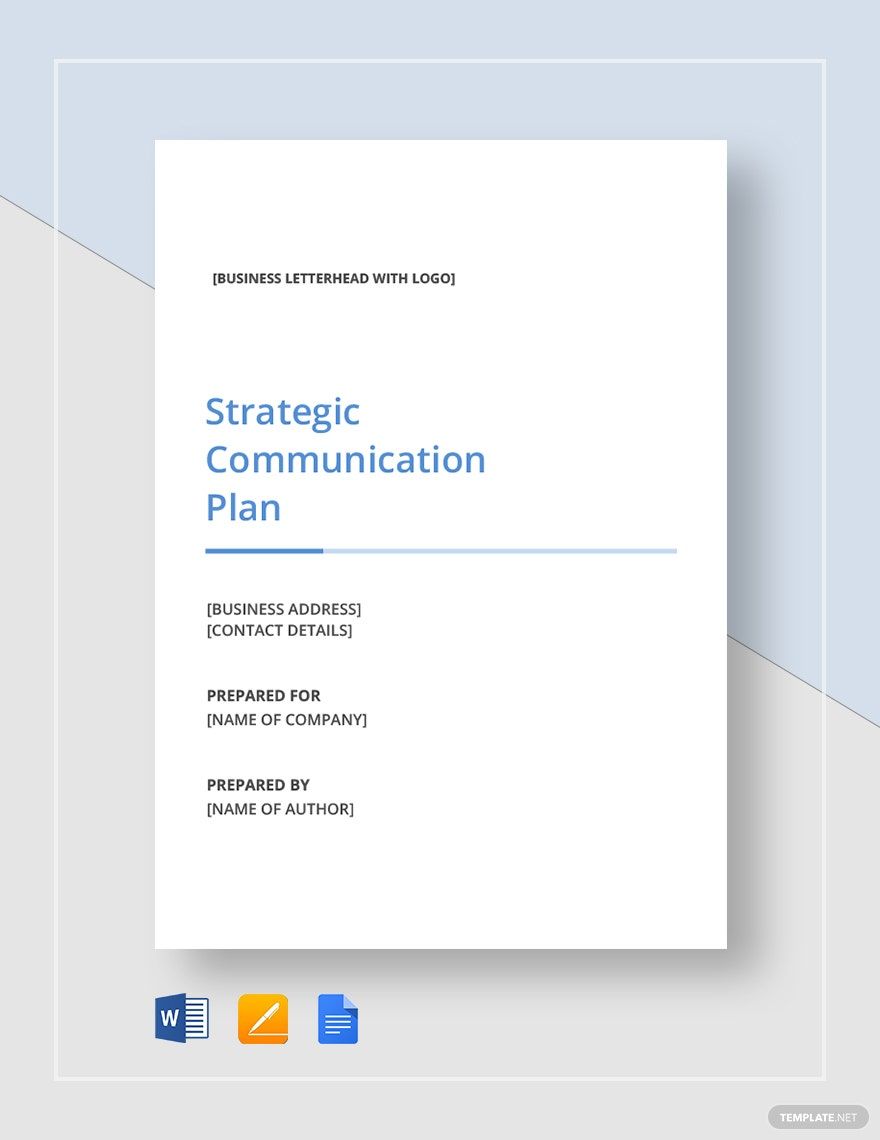6+ Simple Communication Plan Examples
Embark on a journey to master simple communication with our complete guide, enriched with real-world communication examples. This guide delves into effective strategies and techniques to enhance your communication skills, tailored for both personal and professional settings. It offers practical examples and insights into developing a clear, concise, and impactful communication plan. Whether you’re a team leader, a business owner, or anyone looking to improve your communication prowess, this guide provides valuable tools and examples to help you communicate more effectively and efficiently.
Download Simple Communication Plan Bundle
Simple Communication Plan

The Simple Communication Plan Examples provides a thorough guide for creating an effective communication plan. It includes key components such as objective setting, audience analysis, and defining key messages. Additionally, it covers selecting communication channels, planning frequency and timing, assigning responsibilities, establishing feedback mechanisms, and evaluating the plan’s effectiveness. This resource is ideal for anyone looking to develop a clear and efficient communication strategy in a business or organizational context.
Simple Project Communication Plan
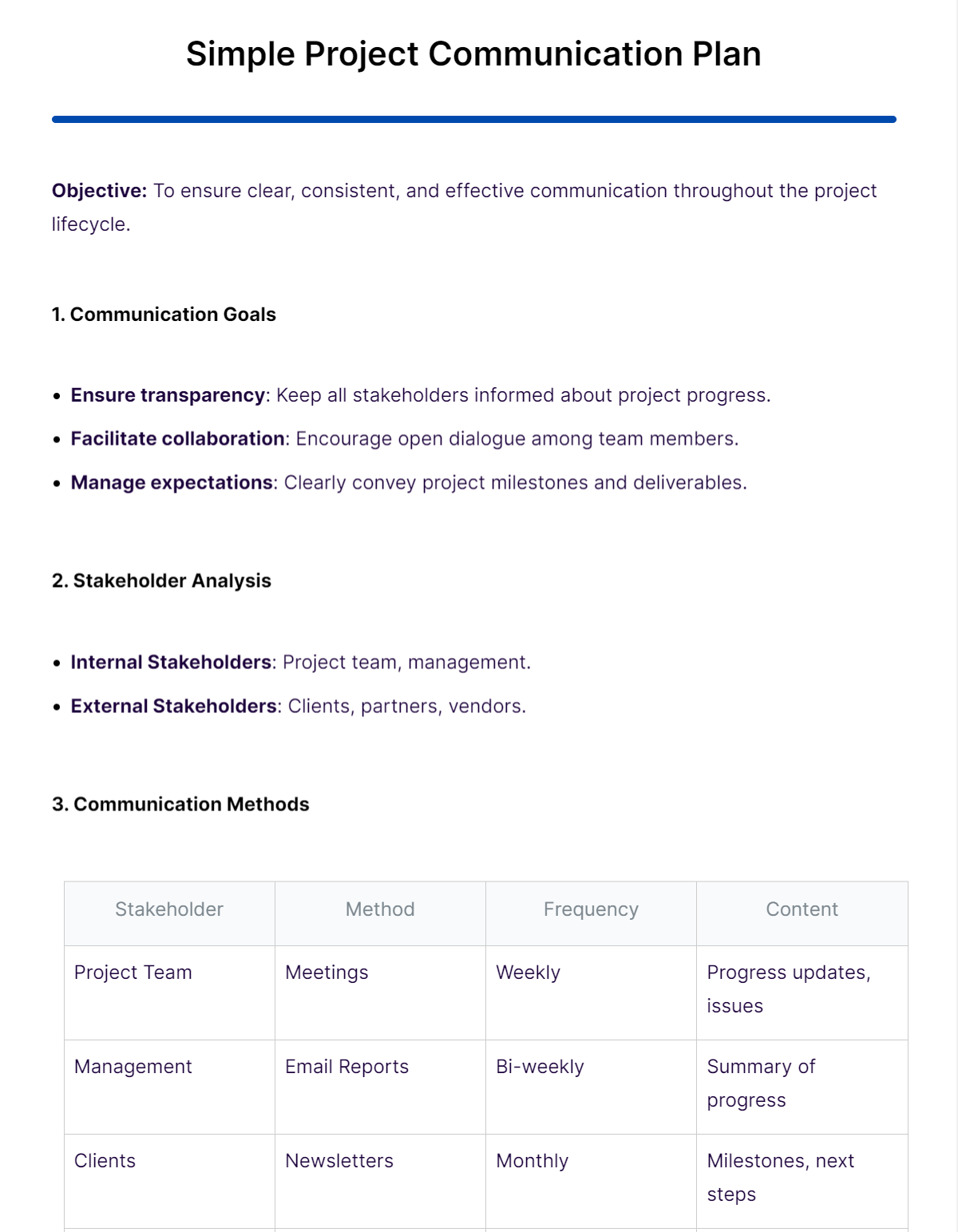
The Simple Project Communication Plan provides a detailed blueprint for establishing clear and effective communication throughout a project’s lifecycle. It covers essential aspects such as setting communication goals, stakeholder analysis, selecting appropriate communication methods, assigning roles and responsibilities, and establishing feedback mechanisms. The guide also emphasizes the importance of reviewing and adapting the plan, crisis communication plan, and document control. This resource is ideal for anyone looking to create a structured communication strategy for their project
Simple Business Communication Plan
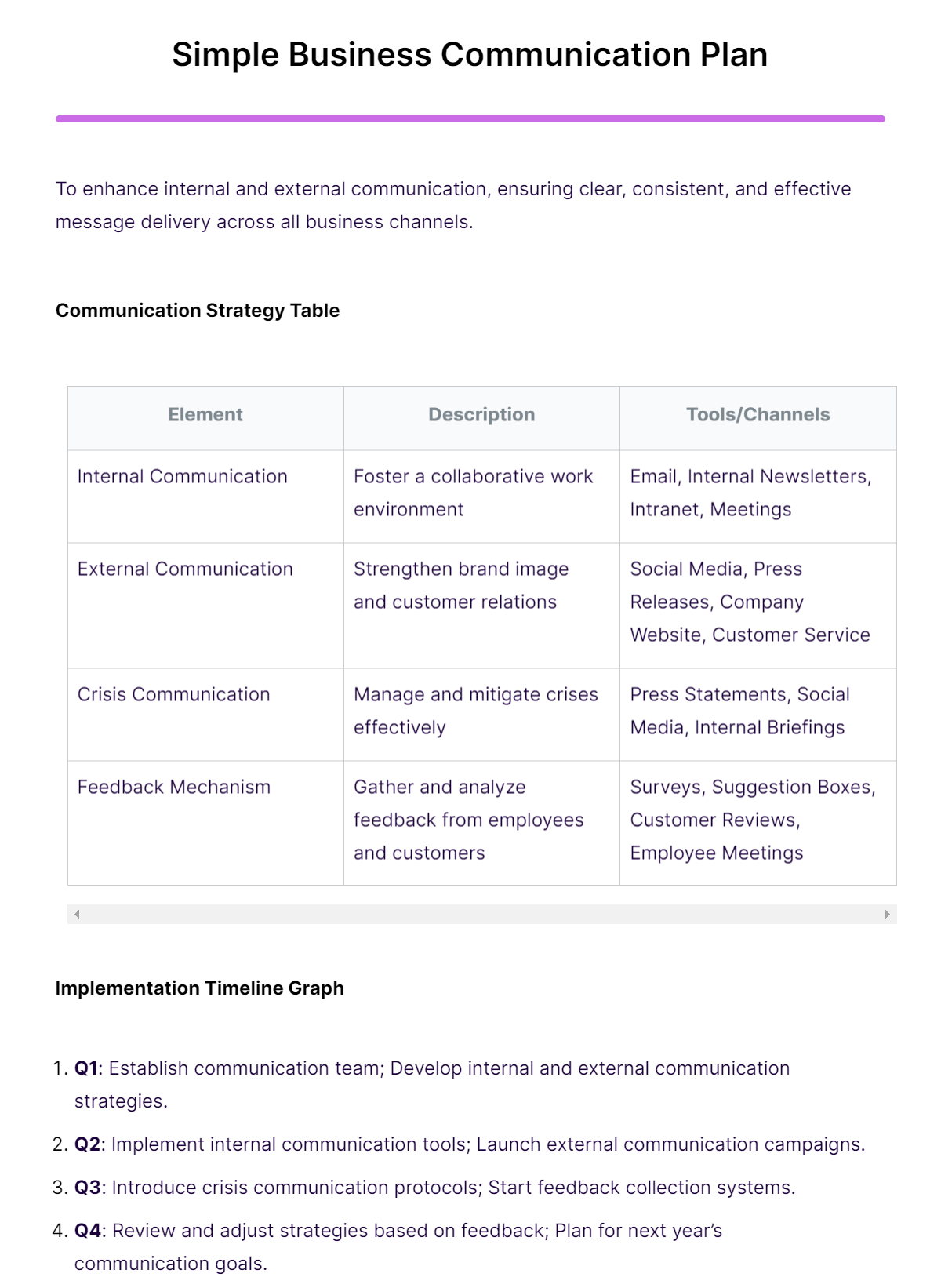
The creating a simple business communication plan It emphasizes the importance of clear internal and external communication plan for effective message delivery across various business channels. The content covers key aspects such as communication strategy, implementation timeline, key performance indicators, roles and responsibilities, budget allocation, and a review and adaptation plan. Each section is designed to guide businesses in establishing a cohesive communication strategy that aligns with their objectives and audience needs.
Simple Communication Plan Template
Free Simple Marketing Communications Plan Template
Simple Strategic Communication Plan Template
Simple Crisis Simple Communication Plan
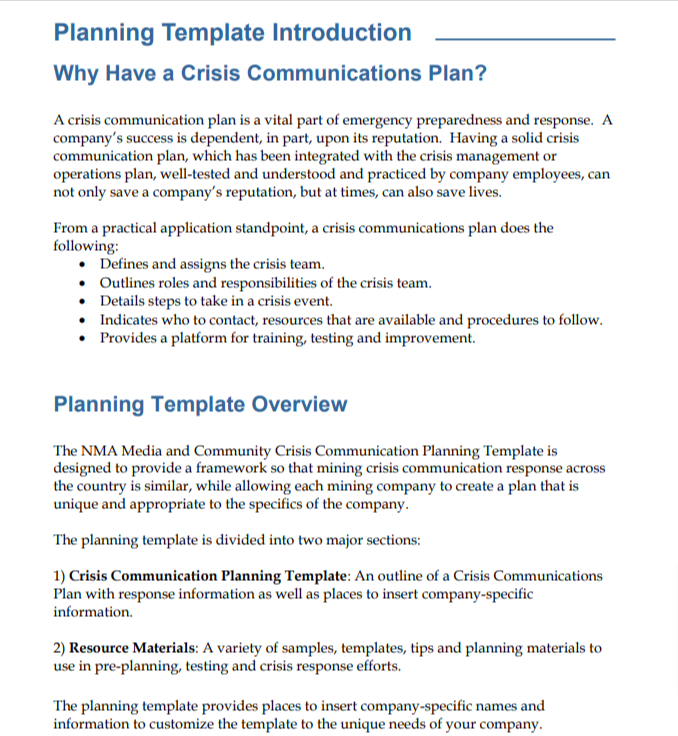
nma.org
DownloadSimple Strategic Communication Plan
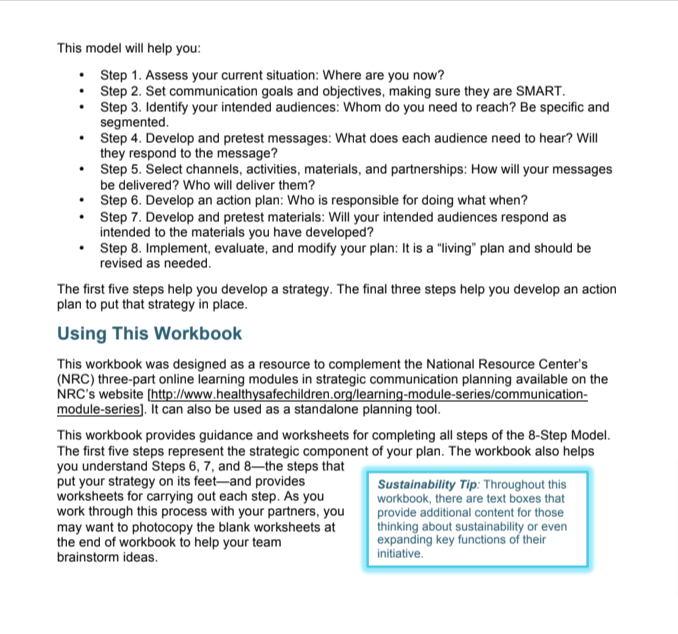
healthysafechildren.org
DownloadHow do you Create a Simple Communication Plan?
Crafting a simple communication plan involves identifying key messages, stakeholders, and the most effective communication channels. It’s essential for ensuring clarity and alignment in any project or initiative. Here, we present ten unique and distinct examples of how to communicate effectively within such a plan.
- Team Briefing: Regular team meetings to discuss progress.
Example: “Let’s gather every Monday to review our project milestones.” - Email Updates: Frequent emails to keep stakeholders informed.
Example: “I’ll send weekly email updates to keep everyone in the loop.” - Newsletters: Monthly newsletters for comprehensive updates.
Example: “Our newsletter will detail the latest project developments.” - Social Media Posts: Utilizing social media for wider engagement.
Example: “We’ll post project highlights on our social media platforms.” - One-on-One Meetings: Personal meetings for detailed discussions.
Example: “I’d like to schedule a one-on-one to go over your part of the project.” - Webinars: Online seminars for in-depth explanations.
Example: “Join our webinar to understand the technical aspects of our project.” - Feedback Forms: Collecting stakeholder feedback for improvements.
Example: “Please fill out the feedback form to help us enhance our communication strategy.” - Project Dashboard: A digital dashboard for real-time updates.
Example: “Check the project dashboard for the latest status updates.” - Video Conferences: Remote meetings for team collaboration.
Example: “We’ll discuss the project challenges in our next video conference.” - Intranet Announcements: Company intranet for internal announcements.
Example: “All updates will be posted on the intranet for easy access.”
Simple Communication Plan for the Execution of Your Project
Creating an effective Simple Communication Plan for the Execution of Your Project is essential for streamlined project management and successful outcomes. This plan ensures clear, consistent, and efficient communication among all project stakeholders, enhancing teamwork and project delivery.
- Weekly Project Updates via Email: Share weekly progress emails with all team members. Example: “This week, we completed the design phase, moving next to the development stage.”
- Daily Stand-up Meetings: Brief daily meetings to discuss progress and obstacles.
Example: “Let’s quickly go over what each of us accomplished yesterday and our goals for today.” - Project Dashboard Access: Provide a shared online dashboard for real-time updates.
Example: “Please check the dashboard for the latest project metrics and updates.” - Monthly Stakeholder Meetings: Hold regular meetings with stakeholders for updates. Example: “This month’s meeting will cover our progress and next steps.”
- Use of Project Management Tools: Utilize tools like Trello or Asana for task tracking. Example: “Your tasks and deadlines are updated in Asana; please review and update your progress.”
- Email Newsletters for Clients: Send monthly newsletters to clients about project status. Example: “Our latest newsletter provides an overview of the project’s current stage and upcoming milestones.”
- Interactive Webinars for Team Training: Conduct webinars for team skill enhancement. Example: “Join our webinar to learn about the new software we’re implementing in our project.”
- Dedicated Slack Channels for Quick Queries: Create Slack channels for different project aspects.
Example: “Please post your technical questions in the #project-tech-support channel.” - Feedback Sessions with Team Members: Regular sessions to gather team feedback. Example: “In our next session, please share your thoughts on project workflow improvements.”
- Internal News Bulletin Boards: Utilize bulletin boards for important announcements. Example: “Check the bulletin board for the latest project updates and team announcements.
What Should a Simple Communication Plan Include?
Core Objectives and Goals: Clearly define the purpose of communication in the context of the project.
Example: “Our goal is to ensure every team member understands the project milestones.”
Target Audience Identification: Pinpoint who needs to receive the communication.
Example: “We need to inform our marketing and sales teams about the product launch.”
Key Messages: Outline the main points that need to be communicated.
Example: “The key message is the benefits of our new software to users.”
Communication Methods: Decide on the channels for disseminating information.
Example: “We will use email updates for weekly progress reports.”
Timeline and Frequency: Establish when and how often communication should occur.
Example: “We’ll hold bi-weekly meetings to discuss project updates.”
Responsibility Allocation: Assign who will handle various aspects of communication.
Example: “John will be responsible for internal team updates.”
Feedback Mechanisms: Include ways to receive feedback from the audience.
Example: “We’ll have a Q&A session after each presentation.”
Evaluation and Adjustment: Plan for reviewing the effectiveness of the communication.
Example: “We will assess the clarity of our messages through surveys.”
Resource Allocation: Detail resources needed for effective communication.
Example: “We will allocate budget for communication tools like a team collaboration software.”
Documentation and Record Keeping: Keep records of all communications for reference.
Example: “All meeting minutes will be documented and stored in our shared drive.”
Developing a simple communication plan involves a systematic process. It starts by identifying the purpose and audience for your communication. Then, you design your message and consider available resources, planning for potential obstacles and emergencies. The plan also includes strategies for connecting with media and other influential entities to spread your message. Creating an action plan and deciding how to evaluate and adjust it based on results is crucial. For a detailed guide and more insights on developing a communication plan.
A simple communication plan is vital for any project or organization, focusing on key components to ensure effective information dissemination. At its core, it includes clear objectives outlining what the communication aims to achieve, and a target audience to specify who the message is for. The plan details the key messages to be conveyed, ensuring consistency and relevance. It also encompasses the choice of appropriate channels and tools for message delivery, be it emails, social media, or meetings. Additionally, a timeline for communication activities provides structure, while a feedback mechanism allows for continual improvement. Lastly, roles and responsibilities are assigned to ensure accountability and efficient execution of the communication strategy.



